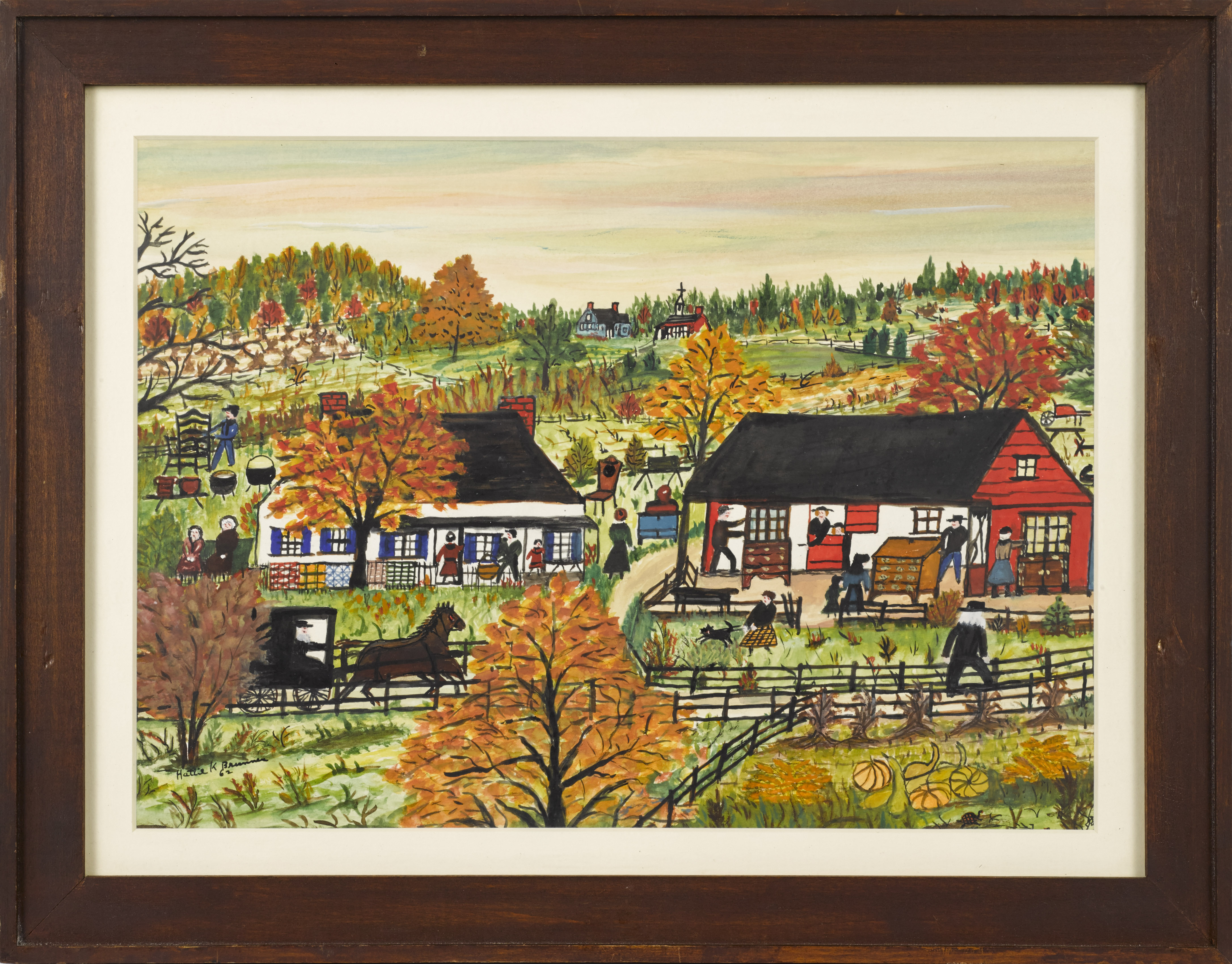Gouache {sometimes referred to as body color and pronounced “gwash”) and watercolor paintings are often not clearly distinguished as being different, perhaps because making the distinction just based on a visual examination can be difficult, perhaps because both techniques are often used in the same work, but they are different in fundamental ways. They share the same binding agent but there is far more pigment in relation to water in gouache. Gouache, unlike watercolor paint, is opaque and sometimes to heighten the effect of this opacity, chalk or some other white pigment may be added. All the additional pigment and decreased water makes gouache much heavier – and they mean that gouache covers more quickly, dries more rapidly, and that it has to be used in more direct, less subtle ways than watercolor, as it does not offer the bleeding, shading, and layering abilities watercolor does.
Because of the solid, “flat” appearance of gouache when dried, it is very popular in designs like posters for commercial illustrations. Gouache is also used frequently in connection with watercolor, perhaps most notably in hand-drawn animation where gouache provides the solid, dramatic color needed for characters and watercolor allows for subtler, softer background elements.
While it is by no means a common medium, gouache offers certain advantages (en plein air artists tend to favor it because of the rapid drying) and it also was frequently used for studies for larger works. Matisse, Magritte and Klee are among the well-known artists who have worked in gouache, but it dates back centuries with forms of it documented in ancient Greece, in ancient Egypt and in the illuminated manuscripts of Europe. It has a role in a wide variety of painting styles and historical traditions.




